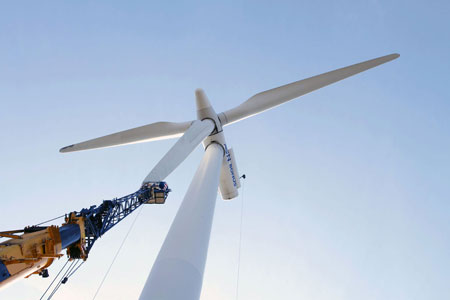One of the advantages of Rotor Blade Extension (RBE) is the way the installation is carried out: on-site and on a hanging blade, avoiding the necessity of heavy cranes and long downtimes. RBE is a product that increases the efficiency of wind turbines, which consists of an additional blade tip segment, fixed at the blade tip of the rotor. That system was certified by DEWI / OCC in 2012.
The prototype of RBE was designed by fk-wind, for wind turbines types Bonus 1.0 and Bonus 1.3, and Energiekontor has applied this technology in wind farms in Germany and Portugal.
Rotor Blade Extension design
The RBE type Bonus 1.0 is 1 meter long, weighing 15 Kg and RBE type Bonus 1.3 is 1.5 meters long, weighing 45 Kg. The extension is attached to the tip of the existing blade. The lightning protection system of the original blade is removed and refitted in the new tip with a connection to the original lightning protection system. In the case of RBE for Bonus 1.3, it has an additional lightning protection system at the end of the new tip.
Rotor Blade Extension installation
Two half shells overlap the existing rotor blade tip and are fixed with adhesive resin. A final polishing and painting of the blade and RBE protects the material. The original rotor blade remains unaffected.
The installation process will be monitored in all its steps, through serviced measuring equipment. Scales must be employed to carry out the stoichiometric mixtures and the environmental conditions controlled through the thermo-hygrometers with data logger and anemometers. To install the extension, weight of all the parts to be added must be totally accurately controlled.
For similar turbines and similar sites the method described will be a solution for the improvement of wind farms. Earlier mistakes in planning and energy prediction can be corrected.
Rotor Blade Extension
www.rotorbladeextension.com/
Filed Under: Blades, Components, News, Turbines





